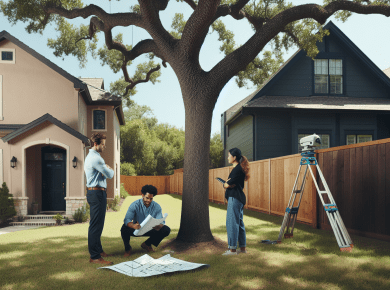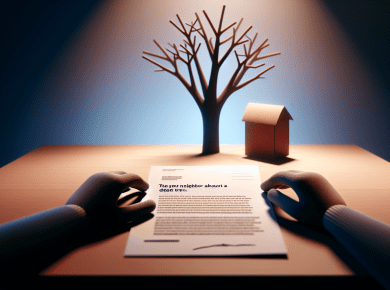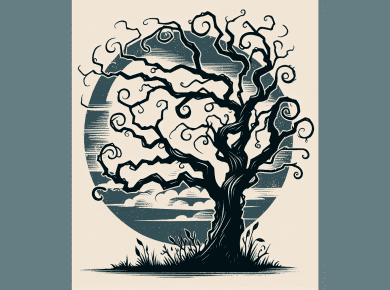Table of Contents
- A neighbor cut down my tree in Washington
- My neighbor cut my tree in Washington
- My tree branches overhang my property in Washington
- My neighbor damaged my tree on my property in Washington
- My neighbor’s tree roots or branches damaged my property in Washington
- Can my neighbor make me cut my tree?
- How can I get my neighbor to cut his dead tree in Washington?
- What happens if I cut my neighbor’s tree down in Washington?
- If a tree is cut down on my property by a neighbor how much money should I receive in damages?
A neighbor cut down my tree in Washington
In Washington, cutting down a tree without permission can create a legal dispute between neighbors. When a neighbor has cut down or damaged a tree that belongs to another person in Washington, it’s important to know the legal rights that a person has in protecting their tree.
If someone’s tree has been damaged or cut down by a neighbor, there are several steps an individual should first take. Gathering the facts is key before taking action. For example, taking photographs of the scene, identifying witnesses and writing down what happened, and keeping receipts for any damaged items are all helpful in establishing evidence for a legal case. Additionally, if the tree was on public property, reporting the incident to the local police can help to document the event.
The Washington State Department of Natural Resources also lists laws that protect trees, shrubs, and other forest trees. The Washington State Forestry Department outlines tree laws covering certain species, the conditions under which a landowner can remove trees, and property boundary rights. It’s important to research state or local laws to make sure that a tree is legally recognizable if a case should need to be argued in a court case.
Alternatively, if a neighbor has cut down a tree or damaged a tree that belongs to another person, connecting with a lawyer who practices in these cases can be especially helpful. Such lawyers are often able to advise on the law, review the filings, and brief the person on the legal options that are available.
In the end, having the advice of a lawyer who practices in these cases can be especially beneficial in a case against a neighbor.
My neighbor cut my tree in Washington
If your neighbor in Washington has cut down a tree that you own, you may have legal recourse to receive compensation and/or be able to have the tree replaced.
First, to ensure that you are legally able to pursue a claim against your neighbor, determine if the tree in question is actually on your property. For this, you may need to produce a survey or deed of the parcel in question, or contact a land surveyor to verify the location of the tree.
Once you’ve confirmed that the tree is indeed on your property, you’ll need to gather as much evidence as possible to support your case against your neighbor. This could include taking photographs of the tree, documenting the work that was done, and collecting testimonies from any witnesses.
Next, speak to your neighbor and attempt to settle the dispute without taking legal action. If that isn’t possible, consider filing a complaint with the local sheriff’s office or the county courthouse.
Finally, if your case goes to court, you may need to hire a lawyer or prepare your case yourself. Again, having strong evidence is important for your case. In addition to negotiating a settlement, you may also be able to receive an injunction to force your neighbor to repair any damage done to your property.
No matter what route you choose, it is important to be aware of your rights and to know the law when it comes to disputes with your neighbor. In Washington, you can also contact a local legal aid program or the Washington State Bar Association for more information on protecting your tree and suing your neighbor.
My tree branches overhang my property in Washington
If you live in Washington and have a tree in your yard whose branches are overhanging your neighbor’s property or your own property, it’s important to understand how to address the situation.
First, it’s important to know who is responsible for any damage caused by the overhanging tree branches. In Washington, the owner of the tree is responsible for any damage the tree causes, even if the branches are extending onto a neighboring property.
The Washington Code of Civil Procedure says that when a tree or its branches on one’s property extend onto another’s property and caus damage, the neighbor may bring an action against the tree’s owner. If a neighbor is affected by overhanging tree branches and has submitted a written notice of the condition, the owner must take reasonable steps to either eliminate the encroaching condition, or take reasonable action to compromise and protect the neighbors property line.
If a neighbor does not take action when a tree is encroaching, the neighbor has “invalidated” their right to take action in the future. As such, it’s important that you take the necessary steps to address the problem if you’re the tree owner or neighbor.
If you plan to trim the tree and remove the overhanging branches, the state of Washington requires you to complete a private tree service application, which can be obtained from the local city hall or county office. This application must be filled out and approved by city or county officials before any action can be taken.
It’s important to understand the laws pertaining to tree branches that overhang property in Washington in order to protect yourself and your neighbors. If you have trees on your property whose branches are extending onto your own property or your neighbor’s property it’s wise to take the appropriate steps, including addressing the issue before damage is done.
My neighbor damaged my tree on my property in Washington
If your neighbor has damaged your tree on your property in Washington, you have the right to pursue legal action. The important thing to do is to document the damage and the tree before contacting your neighbor. You should take pictures or videos of the tree, any damage or destruction it has suffered, and the area surrounding it. You should also take measurements of the tree and document the condition it was in before the damage happened.
The next step is to contact your neighbor and explain the circumstances. Hopefully they will agree to fix the damage and pay for any repairs. You can further this conversation by providing evidence such as the pictures and measurements that you took of the tree before the incident.
If your neighbor does not voluntarily agree to help, you should consider talking to a legal professional. However, you must be aware that there are certain requirements for legal action against a neighbor. For instance, the damage must have cost more than $750 dollars, or resulted in an unsightly area or hazardous condition in order for you to pursue a legal claim.
You should document any conversations that you have with your neighbor and be prepared to provide this evidence if you proceed to court. Furthermore, depending on the situation, it is sometimes possible to come up with a different solution. For example, you could approach the situation by talking to your neighbor and suggesting that they help pay for the tree to be cut down or provide you with a payment to cover the damage.
Regardless of the outcome, it is important to make sure that you have thoroughly documented the incident. This will help ensure that your legal claim, or any other solution you come up with, is fair and reasonable.
My neighbor’s tree roots or branches damaged my property in Washington
If a tree belonging to your neighbor has caused damage to your property here in Washington, you may be able to seek compensation.
The first step is to determine who owns the tree in question. In Washington, neighboring landowners each have a shared responsibility for adjoining trees, even if the tree is located entirely on one person’s property. This means that both parties have the right to remove dead or potentially dangerous branches that hang over the property line.
Once ownership of the tree has been established, you’ll need to determine who is responsible for the damage. The reason for the damage must be established before you can seek compensation. Was the damage due to a natural event, such as high winds? Or was the damage due to a factor for which the neighboring landowner is responsible, such as lack of care or upkeep?
If the damage was caused by periodic maintenance that the neighboring landowner should have taken but failed to do, they may be required to pay you compensation. In cases where natural forces are to blame, you may still be able to recover compensation if you can prove that the neighbor’s tree was in a hazardous condition, such as diseased, dead or dying.
In either case, you may want to consider hiring a lawyer. An attorney can review your case and provide advice on how to proceed. It is generally advised to work directly with your neighbor in the first instance, avoiding court action. If a resolution can’t be reached, you may need to pursue a legal claim for damages.
In Washington state, a claim for compensation due to tree damage has a three-year statute of limitations from the date of the damage. It’s best to pursue your claim as soon as possible after ascertaining the ownership and cause of the damage.
Can my neighbor make me cut my tree?
There are a few things to consider before deciding what to do when a neighbor asks you to cut your tree.
Firstly, it is important to determine who owns the tree. If it is part of your property and you feel that the tree is not a hazard to your neighbor’s property, then you may feel that there is no need to remove it.
Secondly, if the tree is on a shared piece of property, you should consider the health of the tree and its potential for danger if it isn’t properly pruned. If you feel that it is a hazard, then it may be wise to prune it back to an acceptable level.
Thirdly, it is wise to consider the potential effect of removing the tree. The tree may provide shade and other benefits for both your and your neighbor’s property, not to mention the life of birds and other animals that make the tree their home.
Finally, it’s important to research local laws in your area surrounding trees to ensure that your neighbor’s request is in accordance with local ordinances. If not, then you may have legal grounds to decline the request.
It is ultimately up to you to decide what to do when your neighbor makes a request to cut down a tree. Researching local laws, discussing the potential hazards of the tree with your neighbor, and considering the impact of removal can help you determine the best course of action.
How can I get my neighbor to cut his dead tree in Washington?
1. Talk to your neighbor: The best bet for getting your neighbor to cut down his dead tree is to have an honest and open dialogue with them directly. Explain why you want the tree taken down and the potential benefits it could have. It might be that the tree is dangerous during wind or ice storms, or that it’s blocking a view you enjoy. They may not understand the potential risks of the tree until you discuss it with them.
2. Offer to help: Offer to help your neighbor in some way to get the tree removed. You might offer to help financially, or to help with the physical labor of taking the tree down.
3. Offer alternative solutions: If you cannot help with the actual removal, suggest alternative solutions to the problem. Perhaps you like the tree and would prefer it to be pruned back instead of completely cut down. Explain why this would be a better solution for you both and that it’s actually more beneficial for the tree itself.
4. Contact the city: If your neighbor is unwilling to listen to your suggestions, you can also contact the city and inquire about ordinances concerning overgrown trees and dead trees on private property. They may be able to mandate that your neighbor take care of it.
5. Take legal action: In some cases, local laws may entitle you to take formal legal action if your neighbor is still uncooperative. Check with the local government to determine if the tree is an immediate threat or if it violates local codes and ordinances. If this is the case, you may be able to sue to force your neighbor to remove the dead tree.
What happens if I cut my neighbor’s tree down in Washington?
If you cut your neighbor’s tree down in Washington, you’ll be engaging in trespassing, which is an act of civil wrongs. Depending on the circumstances, you may face criminal prosecution for illegal timber harvesting under Washington state law.
First and foremost, you should check with at least one of your county assessor’s offices to verify if the tree is on your property or if it is on a neighboring property. If it’s on a neighboring property, you’ll need to get permission to remove it or you will be committing a trespass.
If you cut the tree down without a permit and are found to be in violation of the law, you could face criminal charges. In Washington, cutting or damaging someone else’s tree without permission is considered a misdemeanor and could result in fines up to $1,000 and/or up to 90 days in jail.
In addition to criminal charges, you may also be held liable for damages. The property owner may be eligible for monetary compensation for the loss of the tree, and any damage done to the surrounding property. The tree owner may also be awarded compensation for the cost of replanting the tree and for any other losses caused by the removal of the tree such as structural damage, decreased property value, or loss of privacy.
It is important to note that in some cases, cutting a tree without permission may be allowed if it is a hazard or is causing damage to nearby structures. However, before engaging in any such activity, it is important to consult with a tree care professional and the local government, such as the department of community development, to ensure that you are in compliance with the law.
If you believe you may have cut a tree down without proper permission, it is highly recommended that you contact an experienced attorney in your area to discuss your rights and any legal implications.
If a tree is cut down on my property by a neighbor how much money should I receive in damages?
We have to keep in mind that the amount of damage is based on the value of the tree. The value of the tree would be based on the species, age, and condition of the tree when it was cut down, minus any impairment due to disease or other factors.



